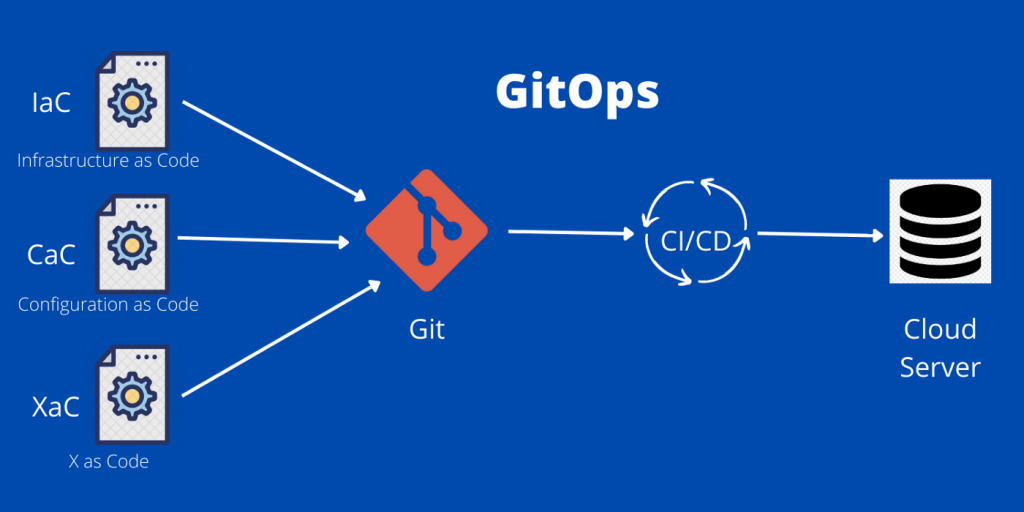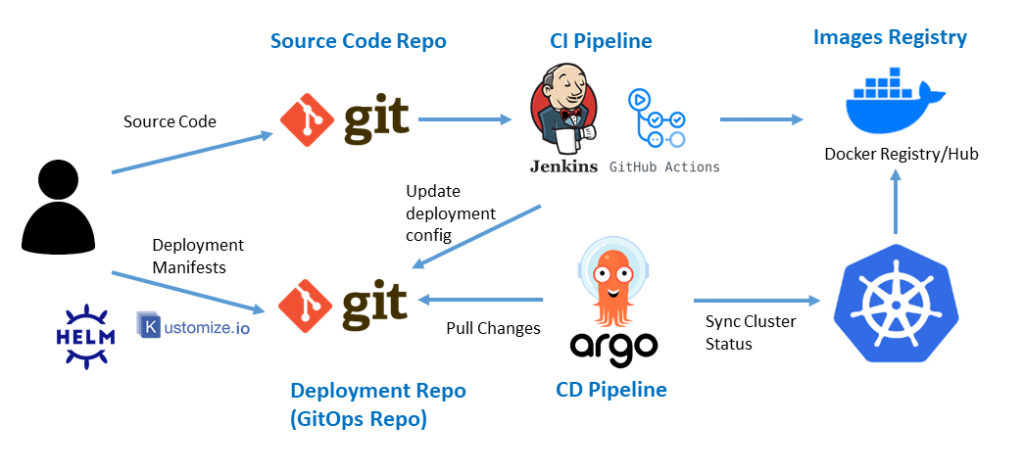
Are you tired of dealing with manual deployments and human errors? Do you want to streamline your software development process and reduce the risk of downtime? If so, you might want to consider GitOps. In this blog post, we will explore the best GitOps practices and how they can help you achieve your goals.
What is GitOps?
GitOps is a modern software development approach that uses Git as a single source of truth for infrastructure and application deployment. It is based on the principles of declarative infrastructure and continuous delivery. With GitOps, all changes to the infrastructure and application are made through pull requests, which are reviewed and approved by a team of developers. Once the pull request is merged, the changes are automatically applied to the target environment using a GitOps tool such as Flux or Argo CD.
Best GitOps practices
- Use a declarative approach
One of the key principles of GitOps is declarative infrastructure. This means that you define the desired state of your infrastructure and application in code, rather than relying on manual configuration. This approach ensures consistency across environments and reduces the risk of human errors.

- Implement continuous delivery
Continuous delivery is another important aspect of GitOps. It enables you to deliver changes to your infrastructure and application quickly and reliably. By automating the deployment process, you can reduce the risk of downtime and improve the overall quality of your software.
- Use version control
Version control is a fundamental aspect of GitOps. By using Git as a single source of truth, you can track changes to your infrastructure and application over time. This enables you to roll back changes if necessary and gives you a complete audit trail of all modifications.
- Practice code reviews
Code reviews are an essential part of the GitOps process. By having multiple team members review and approve changes before they are merged, you can catch potential issues early and ensure that the code is of high quality.
- Use automation
Automation is a key enabler of GitOps. By using tools such as Flux or Argo CD, you can automate the deployment process and ensure that changes are applied consistently across environments. This reduces the risk of human errors and frees up your team to focus on more strategic tasks.
- Monitor your infrastructure and application
Monitoring is critical to the success of your GitOps implementation. By monitoring your infrastructure and application, you can detect issues early and take proactive steps to resolve them before they cause downtime. This enables you to deliver a more reliable and resilient software service.
Conclusion
GitOps is a powerful approach to software development that can help you achieve faster, more reliable deployments. By implementing the best GitOps practices, you can reduce the risk of human errors, streamline your deployment process, and deliver a better software service. So why not give it a try? Your customers will thank you for it!
- Degree Pursuit: Navigating the Path to Educational Excellence - July 4, 2024
- Why Is Studying English Important in a Business Environment? - July 4, 2024
- Top 10 Data Science Skills You Need in 2024 - July 3, 2024

